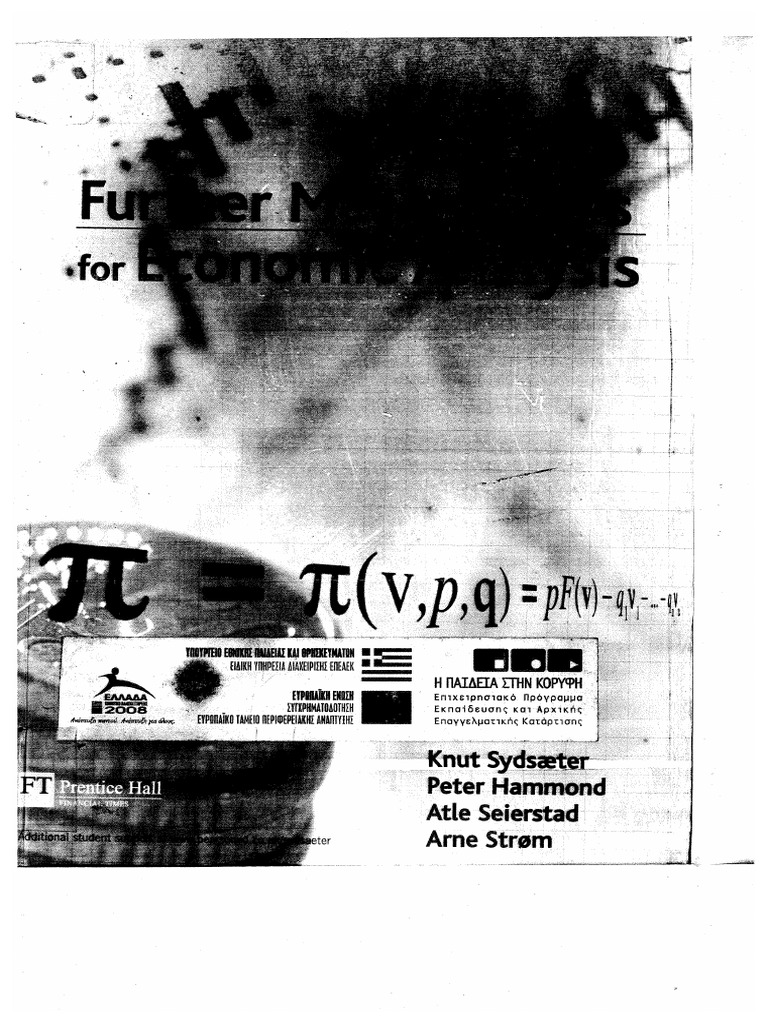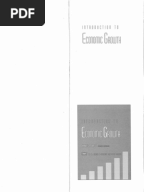Chiang Elements Of Dynamic Optimization Pdf Writer
蔣中一Born1927 (age 91–92)NationalityInstitutionAlma materAlpha Chung-i Chiang (born 1927) is an American mathematical economist, Professor Emeritus of Economics at the, and author of perhaps the most well known mathematical economics textbook; Fundamental Methods of Mathematical Economics.Chiang's undergraduate studies at led to a BA in 1946, and his postgraduates studies at the an MA in 1948 and at a PhD in 1954.He taught at in Ohio from 1954 to 1964, serving as Chairman of the Department of Economics in the last three years there. Then he joined the University of Connecticut as Professor of Economics in 1964.
He taught for 28 years at the —becoming in 1992 Professor Emeritus of Economics. He also held Visiting Professorships at New Asia College (Hong Kong), Cornell University, Lingnan College (Hong Kong), and Helsinki School of Economics and Business Administration.Married to Emily Chiang, he has a son Darryl, and a daughter Tracey. His wide extracurricular interests include ballroom dancing, Chinese opera, Chinese painting/calligraphy, photography, and piano. A piano-music composition of his is featured in Tammy Lum's CD 'Ballades & Ballads' (2015).Selected publications.
Chiang, A. Fundamental methods of mathematical economics. McGraw-Hill, New York. (Now (2005) in 4th Edition with Wainwright, Kevin). Chiang, A.
Elements of dynamic optimization. McGraw-Hill, New York. Now, published by Waveland Press Inc., Illinois.References. (Accessed Jan 2015). (Accessed Jan 2015). Bello, I. 'Book Review: Fundamental Methods of Mathematical Economics'.
Element Of Dynamic Optimization Solution
38 (5): 787–788. Rothenberg, T. 'Book Review: Fundamental Methods of Mathematical Economics'. 58 (5): 1421–1422. (1984).

Fundamental methods of mathematical economics Alpha C. New York: McGraw-Hill, 1984.
Journal of Macroeconomics. 6. Who’s Who in Economics: A Biographical Dictionary of Major Economists 1900–1994.
What Is Dynamic Optimization

In this volume Dr. Chiang introduces readers to the most important methods of dynamic optimization used in economics. The classical calculus of variations, optimal control theory, and dynamic programming in its discrete form are explained in the usual Chiang fashion-with patience and thoroughness. The economic examples, selected from both classical and recent literature, serve not only to illustrate applications of the mathematical methods, but also to provide a useful glimpse of the development of thinking in several areas of economics. From the Back Cover:'This book is immensely valuable, especially for students coming to this material for the first time. Professor Chiang has a singular talent for clear exposition of complex mathematical concepts.
This text is simply the best introduction to dynamic optimization I have ever seen.' - John McDermott, University of South Carolina'Chiang has done it again.' - Henry Thompson, Auburn University'A brilliant, highly readable book.
Bringing together tractable dynamics and a rich array of applications, it covers in depth some major analytical developments in dynamic macroeconomics. Dynamic macroeconomics in the 1990s was about introducing various kinds of market imperfections and heterogeneity in the models available before. This book teaches, in a comprehensive and understandable way, how to use and formulate these models. Chiang makes it insightful and natural for the reader, using the tools he has laid out, to go on to attack substantive and original research in dynamic macroeconomics. Invaluable for teachers and students alike.' - Zuhair Al-Fakhouri, Wayne State University'This is the most understandable text I have come across on topics of optimization. The author discusses the formal elements of problems in an informal way to facilitate an easy grasp of the crucial points.

I have learned and re-learned control theory from this book better than any other text.' - Abdul Qayum, Portland State University About the Author:Retired'About this title' may belong to another edition of this title.